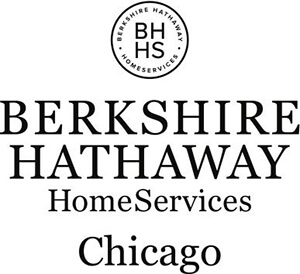Home | Unlocking the Beauty of Your Dining Room
Unlocking the Beauty of Your Dining Room
By Repropix Editor


Unlocking the Beauty of Your Dining Room
By Repropix Editor
Unlocking the Beauty of Your Dining Room: A Photographer’s Guide.
As a professional photographer, one of the most exciting challenges is capturing the essence of a dining room. Whether you’re an interior photographer, real estate photographer, or a homeowner looking to improve your own photography skills, the dining room can be a compelling subject. In this comprehensive guide, we will explore essential tips and techniques for photographing dining rooms. They will not only delight your clients but also help homeowners showcase their spaces effectively. So, keep reading Unlocking the Beauty of Your Dining Room.
1. Setting the Stage.
Before you even pick up your camera, it’s crucial to prepare the dining room for its moment in the spotlight. As a photographer, this is where your expertise and creativity shine.
Firstly, tere are some steps to consider:
Clean and Declutter.
Start by ensuring the dining room is immaculate. Remove any unnecessary items or clutter, as a clean space always photographs better. Dust, vacuum, and polish the surfaces to make the room gleam.
Styling and Staging.
Encourage your clients or homeowners to stage the dining room effectively. This may include setting the table with elegant dinnerware, adding fresh flowers, or creating an inviting atmosphere with warm lighting.
Furniture Arrangement.
Consider the layout and placement of furniture. Ensure that chairs are neatly tucked in, and the room’s arrangement is both functional and aesthetically pleasing.
2. Lighting Magic.
What is more, lighting is one of the most critical aspects of dining room photography. It can set the mood, highlight features, and make the room feel inviting.
Here’s how to make the most of it:
Natural Light.
If the dining room has windows, utilize natural light to your advantage. It can create a warm and inviting atmosphere. Plan your shoot during the time of day when the light is soft and flattering.
Artificial Lighting.
In cases where natural light isn’t sufficient, you can use artificial lighting to enhance the ambiance. Experiment with different sources and angles, such as pendant lights, chandeliers, or lamps, to create interesting and dynamic lighting effects.
Balancing Light.
Sometimes, the dining room may have areas that are too bright or too dark. To address this, use a combination of ambient, flash, and artificial lighting to balance the exposure and capture the room’s full range of detail.
3. Camera Setup.
Moreover, getting your camera ready is crucial for achieving the best results.
Here’s how to set up your camera for photographing dining rooms:
Tripod.
Use a sturdy tripod to ensure your shots are sharp and free of camera shake. This stability is especially important when working with slower shutter speeds.
Lens Choice.
Consider using a wide-angle lens to capture the entire dining room. This lens type is excellent for showcasing the room’s layout and making it appear more spacious.
Aperture and ISO.
Opt for a mid-range aperture to ensure sharpness throughout the frame. Keep your ISO low to minimize noise and capture the finest details.
4. Styling and Staging.
Help your clients or homeowners stage the dining room to perfection.
Here are some tips to use.
A well-set dining table with elegant dinnerware, glassware, and silverware can create a sophisticated atmosphere. Encourage them to add fresh flowers or table centerpieces for added charm.
Suggest incorporating artwork, mirrors, or decorative accents on the walls to enhance the room’s aesthetics. These elements should complement the room’s design and not overwhelm the composition.
To highlight the dining room’s functionality, capture images of the room in use. Photograph people seated around the table to convey a sense of warmth and sociability.
5. Post-Processing.
Lastly, the final touches you apply during post-processing can enhance your dining room photographs.
First of all, adjust exposure, brightness, and contrast to ensure the room is well-lit and inviting. Correct any overexposed or underexposed areas to achieve a balanced look. Moreover, use editing software to eliminate distracting elements or imperfections, such as power cords, reflections, or blemishes on walls or furniture. This ensures that the focus remains on the dining room’s beauty.
Also, apply retouching techniques to enhance the dining room’s details. Focus on elements like furniture, fixtures, and decor to make them stand out in the photographs.
Unlocking the Beauty of Your Dining Room
Photographing dining rooms is a fascinating journey that requires a combination of skills, creativity, and technical knowledge. By implementing the tips and techniques outlined in this guide, you can transform any dining room into a photographic masterpiece. Whether you’re a professional photographer or a homeowner seeking to improve your photography skills, remember that practice and continuous learning are your best allies in unlocking the beauty of dining room photography. As you experiment, refine your approach, and apply these insights, you’ll discover that each dining room has its own unique story waiting to be told through your lens.
Contact us for stunning interior photography, and follow us on Facebook for tips on how 3D home tours can highlight every room in your listing.


















